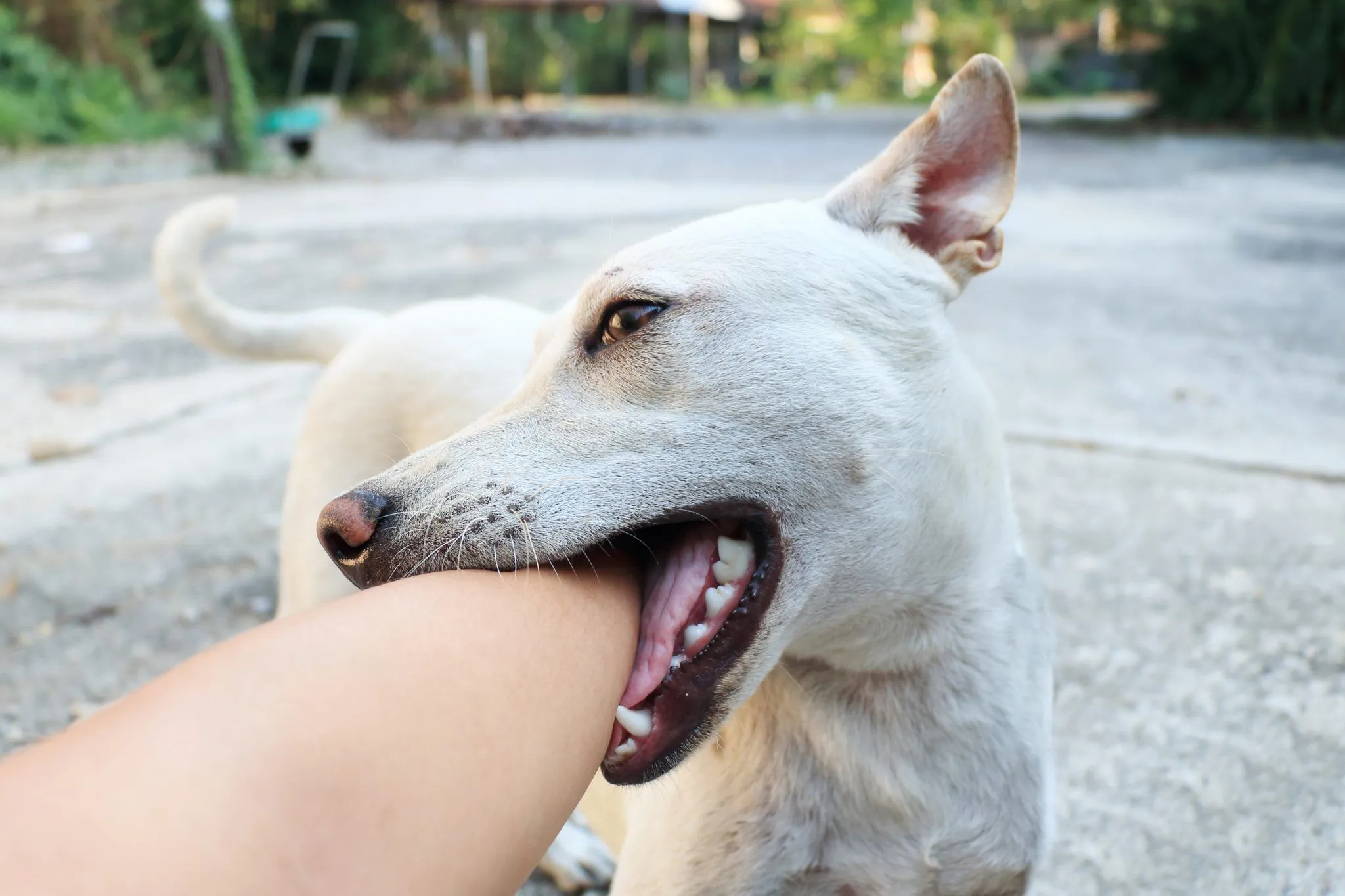Why Does My Dog Hold My Wrist in His Mouth? Unveiling the Affectionate 6 Gestures
Dogs are known for their unique and sometimes puzzling behavior. One such behavior that many dog owners may have experienced is when their furry friend holds their wrist in their mouth. While this behavior may seem strange or even concerning to some, it is actually quite common among dogs and can have several underlying reasons.
Firstly, it’s important to understand that dogs are social animals with a strong pack mentality. In the wild, pack members often engage in various forms of physical contact to establish and maintain social bonds. When your dog holds your wrist in his mouth, it can be seen as a form of bonding and communication. It’s their way of showing trust and affection towards you, similar to how they would interact with other dogs in their pack.
Another possible explanation for this behavior is that your dog may be seeking attention or playtime. Dogs are intelligent creatures that crave mental and physical stimulation. By gently holding your wrist, they may be trying to initiate a game or simply get your attention. This behavior is especially common in younger dogs or those with high energy levels who are looking for ways to engage with their human companions.
Furthermore, the act of holding your wrist in their mouth could also be a sign of submission. In a dog’s social hierarchy, submissive behaviors are displayed to show respect and deference to higher-ranking individuals. By offering their mouth and holding your wrist, your dog may be acknowledging your authority and demonstrating their submission to you.

Why Does My Dog Hold My Wrist in His Mouth
It’s worth noting that the context and accompanying body language should be considered when interpreting this behavior. If your dog is exhibiting other signs of aggression or discomfort, such as growling, stiff body posture, or excessive force in their grip, it’s essential to seek professional advice from a veterinarian or a certified dog behaviorist.
In conclusion, when your dog holds your wrist in his mouth, it can be attributed to various factors such as bonding, seeking attention, or displaying submission. Understanding these underlying reasons can help strengthen the bond between you and your canine companion. However, it’s crucial to monitor your dog’s behavior and seek professional guidance if you have any concerns about their actions. Next, we will explore practical recommendations on how to handle this behavior appropriately.
The Reasons Behind Your Dog Holding Your Wrist in His Mouth
1. Teething and Exploration
One possible reason why your dog holds your wrist in his mouth is teething. Puppies, especially between the ages of 3 and 6 months, experience discomfort and pain as their adult teeth start to come in. Chewing and mouthing objects, including your wrist, can help alleviate their teething pain and provide relief. It’s important to provide appropriate chew toys and redirect their attention to those instead of your wrist.
Additionally, dogs are natural explorers and use their mouths to investigate objects and textures. Your wrist may simply be an interesting and accessible item for your dog to explore. They may be curious about the taste, texture, or even the scent of your skin. However, it’s crucial to redirect their behavior towards more appropriate objects to avoid any potential harm or discomfort.
2. Attention-Seeking Behavior
Dogs are social animals that thrive on human interaction and attention. Holding your wrist in their mouth can be their way of seeking attention or initiating playtime. They may have learned that this behavior gets a reaction from you, whether it’s petting, engaging in play, or simply acknowledging their presence. It’s important to provide regular exercise, mental stimulation, and dedicated playtime to fulfill your dog’s social and physical needs.
3. Bonding and Affection
When your dog holds your wrist in his mouth, it can be a sign of bonding and affection. Dogs have a natural instinct to form strong social bonds, and this behavior can be their way of expressing trust and love towards you. It’s their version of a gentle, non-threatening gesture that mimics how they interact with other dogs in their pack. Embrace this behavior as a positive sign of you.

Why Does My Dog Hold My Wrist in His Mouth
4. Submission and Respect
In a dog’s social hierarchy, submissive behaviors are displayed to show respect and deference to higher-ranking individuals. By holding your wrist in their mouth, your dog may be displaying submission to you, recognizing your authority within the household. This behavior is more commonly seen in dogs that have a naturally submissive temperament or have been trained to respect their owners as leaders. It’s important to reinforce positive reinforcement-based training methods to maintain a healthy balance of respect and trust.
Practical Recommendations for Dealing with Your Dog’s Wrist-Holding Behavior
1. Provide Appropriate Chew Toys
To address teething and exploration needs, make sure to provide your dog with a variety of safe and durable chew toys. Look for toys specifically designed for teething puppies, as they can help soothe their gums and redirect their chewing behavior away from your wrist. Rotate the toys regularly to keep your dog engaged and prevent boredom.
2. Redirect and Distract
3. Establish Consistent Rules and Boundaries
Consistency is key when it comes to training your dog, especially if you’re wondering, “Why does my dog hold my wrist in his mouth?” Establish clear rules and boundaries from the beginning and consistently reinforce them to address behaviors such as “Why does my dog hold my wrist in his mouth?” This question can often arise when dogs are seeking attention or trying to communicate. Using positive reinforcement techniques such as rewards, praise, and treats can encourage desired behaviors and help answer the question, “Why does my dog hold my wrist in his mouth?”
By rewarding your dog for not engaging in wrist-holding and offering them alternatives to express their needs, you’ll help your dog understand what is expected of them. This approach reduces the likelihood of wrist-holding behavior being reinforced unintentionally and addresses the concern behind “Why does my dog hold my wrist in his mouth?” Remember, understanding and patience go a long way in training your dog and mitigating behaviors like wrist-holding, ensuring you both enjoy a happy and harmonious relationship.
4. Engage in Regular Exercise
Physical exercise is essential for dogs to release excess energy and maintain overall well-being, which can be particularly important if you’re wondering, “Why does my dog hold my wrist in his mouth?” A tired dog is less likely to engage in unwanted behaviors, including the peculiar habit of wrist-holding. Ensuring your dog gets regular exercise through daily walks, playtime at the park, or interactive games such as fetch, can help channel their energy in a positive way and reduce the likelihood of them resorting to behaviors such as “Why does my dog hold my wrist in his mouth?”
Incorporating sufficient physical activity into your dog’s routine is a proactive approach to addressing the question, “Why does my dog hold my wrist in his mouth?” This behavior often stems from a mix of seeking attention and having pent-up energy. By providing your dog with regular exercise opportunities, you’re not only catering to their physical health but also mitigating the chances of them feeling the need to engage in wrist-holding as a form of communication or to grab your attention.
5. Seek Professional Guidance
If you’re struggling to manage your dog’s wrist-holding behavior or have concerns about their overall behavior, it’s always a good idea to seek professional guidance. When pondering, “Why Does My Dog Hold My Wrist in His Mouth,” consulting with a certified dog trainer or behaviorist can be invaluable. These professionals can assess your dog’s specific needs and provide tailored advice and training techniques.
They are well-equipped to delve into the question of “Why Does My Dog Hold My Wrist in His Mouth,” helping you understand the underlying reasons for this behavior and provide effective strategies to address it. Engaging with experts who understand the nuances behind the question, “Why Does My Dog Hold My Wrist in His Mouth,” ensures that you receive insights and solutions tailored to your unique situation, fostering a healthier relationship between you and your pet.
6. Monitor Body Language and Seek Veterinary Advice if Needed
While wrist-holding behavior is generally harmless, it’s important to monitor your dog’s body language and overall behavior. If your dog shows signs of aggression, discomfort, or excessive force in their grip, it’s crucial to seek veterinary advice. A veterinarian or certified behaviorist can rule out any underlying medical issues or provide specialized behavior modification plans if necessary.
Remember, patience, consistency, and positive reinforcement are key when addressing your dog’s wrist-holding behavior. With proper guidance and understanding, you can help your furry friend develop appropriate behaviors and strengthen the bond you share.
Conclusions
In conclusion, understanding your dog’s behavior, such as “Why Does My Dog Hold My Wrist in His Mouth,” offers insight into their communication methods and emotional state. For more in-depth explanations and solutions to this and similar behaviors, visit geepets.com, where you can find a wealth of resources tailored to helping pet owners better understand and care for their furry friends.
Additionally, for further reading and external advice, websites like The American Kennel Club (AKC) provide extensive articles on dog behavior, training tips, and health advice, ensuring you have access to reliable and professional information to support the well-being of your pet.























